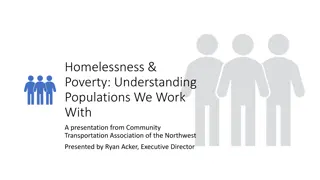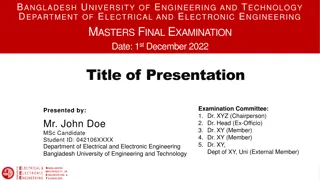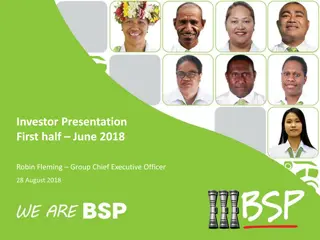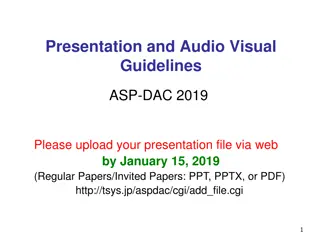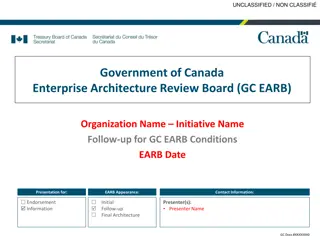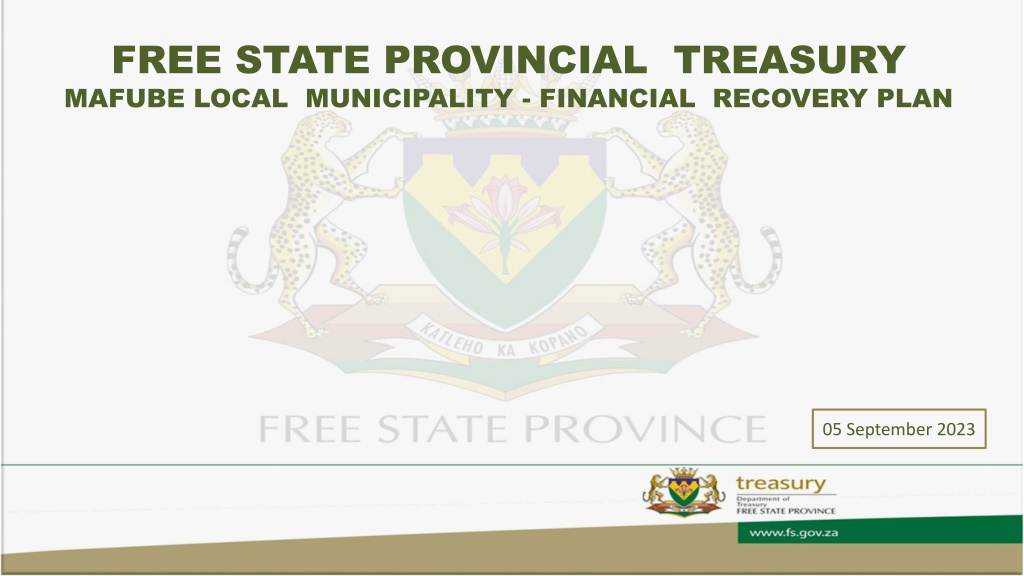
Financial Recovery Plan for Mafube Local Municipality
Learn about the Legislative requirements, the role of the Mafube Council, and the purpose of the Financial Recovery Plan presentation for Mafube Local Municipality. Explore the process, challenges, and key success factors outlined in the plan.
Download Presentation

Please find below an Image/Link to download the presentation.
The content on the website is provided AS IS for your information and personal use only. It may not be sold, licensed, or shared on other websites without obtaining consent from the author. If you encounter any issues during the download, it is possible that the publisher has removed the file from their server.
You are allowed to download the files provided on this website for personal or commercial use, subject to the condition that they are used lawfully. All files are the property of their respective owners.
The content on the website is provided AS IS for your information and personal use only. It may not be sold, licensed, or shared on other websites without obtaining consent from the author.
E N D
Presentation Transcript
FREE STATE PROVINCIAL TREASURY MAFUBE LOCAL MUNICIPALITY - FINANCIAL RECOVERY PLAN 05 September 2023
PRESENTATION LAYOUT PRESENTATION LAYOUT Purpose Legislative requirements Legislative requirements and process Intention of the intervention Methodology applied (Support towards intervention) Municipal support and intervention model Diagnostics of Mafube Local Municipality Challenges 2
PRESENTATION LAYOUT PRESENTATION LAYOUT The role of Mafube Council Monitoring and Oversight Role of the Council FRP Implementation Institutionalization of FRP Key success factors Way forward 3
PURPOSE OF THE PRESENTATION PURPOSE OF THE PRESENTATION To abreast the Mafube Council about Financial Recovery Plan (FRP) as well as the role to be played by the Council and municipality to effectively implement the FRP. 4
LEGISLATIVE REQUIREMENTS LEGISLATIVE REQUIREMENTS In terms of section 139 (1) of the MFMA, mandatory provincial interventions arises from financial crises, persistent material breach of obligations to provide basic services , henceforth the Provincial Executive must promptly: (a) request the Municipal Financial Recovery Service: (i) to determine the reasons for the crisis in its financial affairs. (ii) to assess the municipality's financial state. (iii) to prepare an appropriate recovery plan for the municipality: (iv) to recommend appropriate changes to the municipality's budget and revenue-raising measures that will give effect to the recovery plan: and (v) to submit to the MEC for finance in the province: (aa) the determination and assessment referred to in subparagraphs (i) and (ii) as a matter of urgency; and (bb) the recovery plan and recommendations referred to in subparagraphs (iii) and (iv) within a period, not to exceed 90 days, determined by the MEC for finance: (b) Consult the Mayor of the municipality to obtain the municipality's cooperation in implementing the recovery plan, including the approval of a budget and legislative measures giving effect to the recovery plan. Current Status 5
LEGISLATIVE REQUIREMENTS AND PROCESS LEGISLATIVE REQUIREMENTS AND PROCESS (ROADMAP) (ROADMAP) The Free State Executive invoked Sec 139(5) (a)&(c) in May 2022 on Mafube Local Municipality MEC Finance submitted a formal request to Minister of Finance in line with MFMA Sec 139(1)(a) in June 2022 PT and NT MFRS consulted with Council to outline the process in July 2022 Master road maps was adopted for Mafube Local Municipality. There were some delays in terms of adhering to the set dates but the process was adhered to. Workstream meetings were conducted Consultation with all stakeholders was done.- Council and senior officials, top creditors, Organized Labour, Civil Society and Community. Status Quo Reports (SQR) of the municipality was submitted to both MEC COGTA and Finance. The Minister of Finance/ MFRS has handed the FRP for approval by the MEC for Finance on the 25th of August 2023. The MEC for Finance approved the FRP on the 29th of August 2023. 6
INTENTION OF AN INTERVENTION INTENTION OF AN INTERVENTION The Intention of an intervention should not be to disempower a municipality, but rather to strengthen it to be able to manage its affairs, carry out its duties and perform its functions. If intervention goes on for too long, it runs the risk of weakening the municipality and this will be contrary to the sentiment as espoused in section 154 of the Constitution. The life-cycle of and intervention should commence with a diagnosis, resourcing, reporting progress, developing a sustainability plan and the end as per the diagram below : 7
METHODOLOGY APPLIED (SUPPORT OF INTERVENTION) METHODOLOGY APPLIED (SUPPORT OF INTERVENTION) To facilitate better/easier implementation and improve oversight and monitoring, the methodology used comprise the detailed technical assessment of the state of the municipality in terms of the four pillars of sustainability as detailed below. :- 8
THE MUNICIPAL SUPPORT AND INTERVENTIONS MODEL THE MUNICIPAL SUPPORT AND INTERVENTIONS MODEL The Budget Council of 2019 resolved that the Intergovernmental Relations division of the National Treasury should develop a credible programme of action to respond to the serious financial problems in municipalities. Concomitantly, the MFRS Unit was developed and implemented a new phased strategic approach that guides the development of financial recovery plans in municipalities. This approach consists of three phases namely: Minimal set of key indicators across all four pillars necessary to neutralise financial turbulence (8 - 12months): Focus is on cash and short -term liquidity:Funded Budget, Cost Containment, Cash Flow Management, Trading Debtors and collections, Creditor Management, Cash-backed CGs Include service delivery projects with high visibility such as streetlights and potholes RESCUE Phase 1 To address the underlying causes of failure focusing on eradicating problems at the root (12-24 months): In this phase as strong focus on cash, finances and financial management is still maintained but greater attention is placed on the underlying service delivery, governance and institutional matters perpetuating the financial crisis in the municipality Plugging the holes and fixing the leaks . STABILISATION Phase 2 To ensure financial and service delivery sustainability and prevent a regression (Subject to progress in Phase 2) SUSTAINABILITY Phase 3 9
DIAGNOSTICS DIAGNOSTICS MAFUBE CHALLENGES MAFUBE CHALLENGES Focus Area Key Challenges Inadequate oversight over the progress on implementation of the Audit Action Plan (AAP) Delays in investigating UIF&W and inadequate consequence management Poor service delivery (Water and Sanitation Services, municipal road maintenance) Poor contract management Poor litigation management Failure to pay creditors within 30 days Lack of by-law enforcement Ageing ICT infrastructure and inadequate maintenance of the same Pillar 1: Governance The existing organogram was not costed. Overtime increased significantly between the FY2020/21 and FY2021/22 by 26.07%. The headcount (345 employees) is more than the recommended workforce by 131 employees. Local Labour Forum (LLF) not fully functional. Competences testing not cascaded to all the employees. Performance reviews are not cascaded to all employees. Consequence management is not institutionalised. Most HR related policies are outdated. No regular verification of employees against payroll. Employees qualifications are not verified to determine their validity. No background checks are performed on employees. Pillar 2: Institutional Outsourcing of the main source of revenue (sale of electricity). The billing system is not cleansed. Debtors book balance R861 725 443.10 as at 31 Jan 2023 of which 66.54% of the debtors are in the 3+ years category. Non-compliance with SCM regulations and policies leading to irregular expenditure. Creditors balance was R 663 794 402.21 as at 31 January 2023 of which 90% of the creditors are in the 90 + days category. Misappropriation of grant funding. Pillar 3: Financial Management Electricity debt of about R57 million with Eskom and about R58m with Rural Maintenance. Water debt of about R472m with Dept of Water and Sanitation. Underspending of capital grant funds. Rollover was declined. High water losses of about 86% represents a major contributor to the current financial challenges. Poor Rural Maintenance (electricity) contract management. Ageing of infrastructure/Poor infrastructure maintenance. Pillar 4: Service Delivery 10
THE ROLE OF MAFUBE LOCAL MUNICIPLITY THE ROLE OF MAFUBE LOCAL MUNICIPLITY Council oversees the implementation All decisions must in accordance with the set budget limits, objectives, key performance areas and set targets 01 No decision (Executive or Legislative) should be approved by Council, Executive Mayor and Accounting Officer that contravenes or defeats the FRP and its objectives and Council Portfolio and Standing Committees must be informed by the approved FRP 02 Council commitment and oversight support is critical for the successful implementation of the FRP to ensure that set turnaround targets i.e Revenue enhancement and turnaround times 03 11
MONITORING AND OVERSIGHT MONITORING AND OVERSIGHT 2 3 4 1 Oversight committee must be established that meets monthly to deliberate on progress, participants should include relevant officials from the municipality, (the PT, Prov. CoGTA and Prov. SALGA, NT and National CoGTA) Accounting Officer/ MM Municipal Council will have a political oversight role to review FRP implementation progress NT/ PT MFRS Conducts necessary quality assurance processes to verify performance Confirms/certifies that decisions of the Council/EM/Mayor are consistent with the FRP Must submit the reports monthly to MFRS unit within the Provincial Treasury and the latter will report to NT. 12
ROLE OF THE COUNCIL ROLE OF THE COUNCIL Council and the Executive Committee will be responsible to oversee the implementation of the approved and FRP This FRP guides the executive and legislative authority of Council, the Executive Mayor and the Accounting Officer including the approval of the budget, legislative measures to give effect to the budget, ensuring that all decisions are consistent with the objectives, key performance areas, indicators and targets contained therein It is advised, that no decision (Executive or Legislative) should be approved by Council, Executive Mayor and Accounting Officer that contravenes or defeats the FRP and its objectives The recommendations of the Council Portfolio and Standing Committees must be informed by the approved FRP 13
F FRP IMPLEMENTATION RP IMPLEMENTATION Oversight Committee Performance Management 4 X Pillar Workstreams Approved FRP Monthly and Quarterly Reporting Strategic Alignment Portfolio of Evidence Institutionalization 14
INSTITUTIONALISATION OF FRP INSTITUTIONALISATION OF FRP The MM and heads of directorate must sign individual performance score-cares/ agreements for each financial year that incorporates the FRP. The MM must sign-off all FRP implementation progress reports before submission to NT MFRS, PT, Executive Committee and Council The SDBIP and IDP must be revised for alignment with the FRP. The MM must designate an official in his office to coordinate implementation and reporting on the FRP. All monthly FRP reports must be tabled and discussed in monthly Top Management meetings No decision (Executive, Legislative or Administrative) should be approved by Council, Executive Mayor and Accounting Officer that contravenes or defeats the FRP and its objectives FRP progress report must be a standing agenda item for the meetings of Top Management, Executive Committee and Council 15
KEY SUCCESS FACTORS OF FRP KEY SUCCESS FACTORS OF FRP Political Buy-in: Political problems need political solutions Support from organised labour and general workforce Link FRP activities to key financial outputs i.e. increasing revenue and deceasing expenditure. Change Management Identify and mobilise human and financial resources needed, and roles and responsibilities of other parties beside the municipality to implement the FRPs in terms of Section 142 of the MFMA. Importance to address assurance level of claimed performance against FRP targets (POE). Institutionalise IGR structure/steering committee to monitor implementation of FRP with TOR. 16
WAY FORWARD WAY FORWARD 1. In terms of section of section 146 of the MFMA wherein mandatory provincial intervention has been executed in line with section 139(a) and (c) of the MFMA, the municipality must refer to page 83 and 84 of the FRP and must further: Implement approved FRP ; Report monthly to the MEC for Finance on the implementation of the FRP. 2. The Roadmap has been implemented; however, the following must still be finalized (refer to compliance verification): Institutionalize IGR Structure for FRP monitoring and oversight Monthly progress reporting in accordance with the reporting framework IGR Structure (DCOG and NT) Compile quarterly FRP assessment review reports on the intervention and send them to the Municipality, Minister of CoGTA, MECs Finance and CoGTA, FSPL, SALGA (Section 147 (1)(b) of the MFMA) 3. From administrative point of view, the following intervention approaches (Structures) should be considered: Direct interventions Placing an administrator in the municipality as additional resource together with specialists for each of the 4 Pillars (Financial Management, Service Delivery, Institutional Pillar, Governance/Strategy) (address the issue of the current Provincial Executive Representative (PER)) Indirect interventions - Providing support via existing mechanisms in terms of provincial functionaries e.g., Accounting Services, Budgets and Audit support to the municipality. Hybrid approach - Appointing a dedicated panel of specialists (whether consultants or technical advisors) to support the municipality under the guidance of the FSPT. 4. The FRP is hereby submitted to the Council for noting. 17







